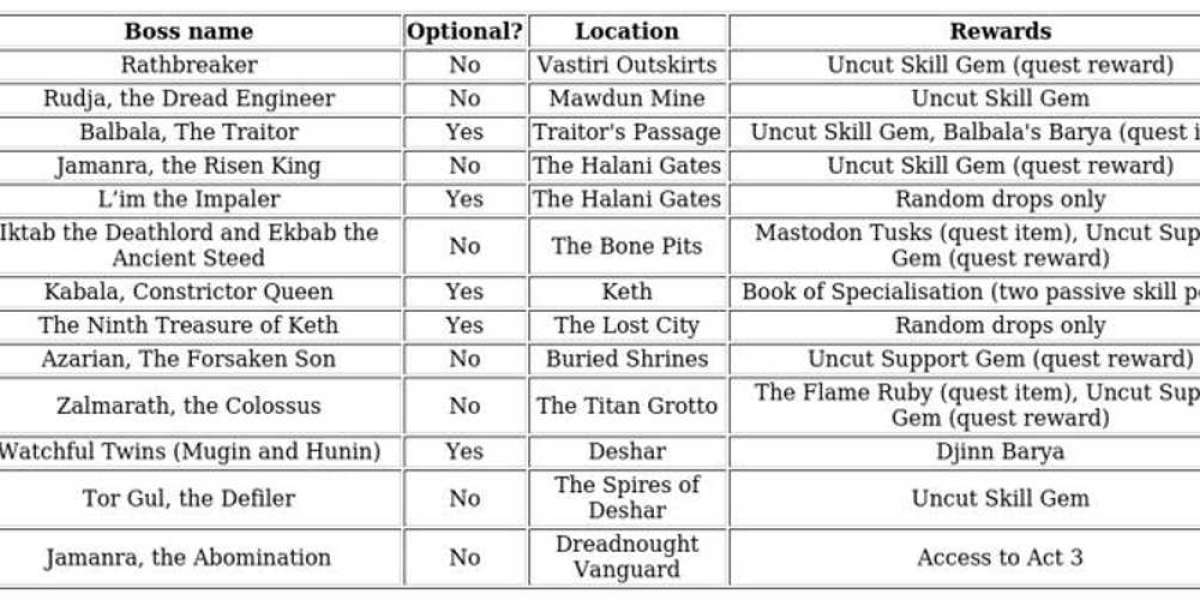
Data incorporated org chart based preparation tools.
Agile job preparing with incorporated task.

IT and Cloud architecture tools for all platforms.
Product Management & Software Architecture.
Brainstorm, plan projects and arrange possessions.
Process, Value chain and System analysis tools.
A visual office for students and teachers.
Run Meetings, Workshops or get feedback.
Document, plan and enhance organization.

Idea to execution on a single collective.
Enterprise-grade security & group partnership.
Visit
Sign Up Free
Home.
Solutions.
Strategy Execution Software HR Planning Software IT & Operations Planning Project Management Software Business Process Management Creately for Software Teams Production & Manufacturing Planning Creately for Education Creately for Marketers
Resources.
Plans.
Features.
Templates.
Blog.
Affiliate Program.
Enterprise.
Contact Sales.
Resources.
HR Planning.
7 Step Recruitment Process for employment the Hybrid Age.
7 Step Recruitment Process for the Hybrid Age
Importance of a Distinct Recruitment Process.
Developing a Sure-fire Recruitment Process.
Employee Recruitment Best Practices to Remember.
Recruitment Process Effectiveness Metrics.
What's Your Recruitment Process?
Increasing candidate flow and conversion rate has ended up being a common obstacle in numerous organizations. To bring in the right skill at the right time, you need to have an efficient recruitment process in place.
One of our significant goals for this year has actually ended up being expanding our team. In the beginning, there was naturally a need to review our recruitment procedure to see what we might do to increase our prospect conversion rate.
We began by re-defining our recruitment procedure according to our employing requirements. As a result, we were effectively able to enhance prospect experience which led to better prospect conversion.
In this post, we will share our optimized recruitment procedure and the steps we required to enhance it.

Importance of a Well-Defined Recruitment Process.
Developing a Foolproof Recruitment Process.
Employee Recruitment Best Practices to Keep in Mind.
Recruitment Process Effectiveness Metrics.
Importance of a Distinct Recruitment Process
A distinct recruitment procedure is important for companies to efficiently and effectively determine, bring in, and pick the most ideal candidates for their task openings. It provides a structured structure for employing supervisors and HR experts to follow, guaranteeing consistency and fairness throughout the recruitment process.
A well-structured recruitment process assists draw in high-quality prospects by presenting the organization as expert and organized. It enables companies to successfully interact their employer brand, worths, and job requirements to potential applicants, increasing the possibility of bring in certified candidates.
Having a distinct recruitment process conserves time and decreases costs connected with hiring. Clear guidelines and standardized treatments streamline the entire recruitment cycle, from producing job descriptions and marketing vacancies to conducting interviews and making deals. This efficiency leads to faster hiring decisions and decreases the possibilities of making expensive errors.
A standardized recruitment procedure promotes fairness and level playing field for all candidates. It ensures that each applicant is assessed based upon the very same criteria and procedures, getting rid of predispositions and favoritism. Consistency in the choice procedure helps protect the organization from possible legal problems connected to discrimination and promotes a diverse and inclusive labor force.
An efficient recruitment procedure produces a favorable impression of the organization in the minds of candidates, regardless of whether they are ultimately worked with or not. By offering clear interaction, timely updates, and a smooth prospect journey, organizations can construct their track record as a company of choice. A favorable candidate experience can cause better employer branding, word-of-mouth referrals, and a bigger talent swimming pool for future openings.
A structured recruitment procedure makes it possible for much better decision-making by supplying an organized technique to evaluate and compare candidates. It allows working with managers to evaluate candidates based on fixed requirements, such as abilities, certifications, experience, and cultural fit. This minimizes the subjectivity in the decision-making process and increases the possibilities of picking the most ideal prospect for the function.
An excellent recruitment process sets the stage for a smooth onboarding experience. When the employing process is well-structured and candidates have a clear understanding of their functions and responsibilities, they are most likely to transition effortlessly into their brand-new positions. Effective onboarding increases worker engagement, satisfaction, and retention rates, decreasing the expenses and efforts related to turnover.
Developing a Sure-fire Recruitment Process
The recruitment process might differ from business to company based upon the organizational structure, choice process, nature of operations, etc. But any well-planned recruitment process ought to assist the employing team hire the ideal prospect.
Here at Creately, we follow a 7-step recruitment procedure that assists us find, draw in and retain the best kind of candidates. The actions are;
1. Identify the employing needs.
2. Prepare task descriptions.
3. Devise recruitment strategy.
4. Screen and shortlist candidates.
5. Conduct interviews.
6. Evaluate and make the offer.
7. Onboard the brand-new employee.
Step 1: Identify the hiring requirements
What are your existing working with requirements? May be a staff member simply left or a new job position just opened. Once you identify the vacancies that exist, you can then define the task specifications such as abilities, knowledge, experience, etc.
This action involves identifying the organization's staffing requirements. For example, a growing tech start-up might identify the requirement to work with a task supervisor, a software application engineer, and a marketing specialist to support their broadening operations. You can identify your hiring needs by checking,
- Any spaces in efficiency, skills or efficiencies that you need to fill.
- A sudden boost in workload that your group can not seem to handle.
- Any staff members who will be leaving the business soon.
At Creately, we make use of an org chart that lists the existing employees and their abilities. This helps us see at a glimpse what skills exist within our company and what abilities we require moving forward. The org chart will be updated with each new hire.
Step 2: Prepare job descriptions
Once you know the skills, knowledge and experience spaces you require to fill, employment specify the job role, duties and duties.
A complete job description helps you know what to look for in possible prospects. It also acts as a checklist for prospects to tick before they decide they are appropriate for the function and use - which implies, more appropriate candidates. For example, a job description for a task supervisor might consist of jobs such as managing job timelines, handling resources, and guaranteeing efficient interaction amongst staff member.
The aspects that must be included in a job description are
- Title.
- Responsibilities.
- Necessary qualifications and skills.
- Compensation, advantages, and benefits.
- Location.
Here's a cool little trick we follow at Creately - prior to composing the job description - we go the extra mile to produce a candidate persona.
Similar to the buyer persona, the job prospect persona is a semi-fictional portrayal of an ideal candidate for the position you are hiring for.
Creating a prospect persona helps you identify what your prospect is searching for, how and where to find them. And it offers you the chance to
- Write more relevant task descriptions, job application, e-mails, training material, etc).
- Identify the best-recruiting channels.
- Create premium and personalized material to attract pertinent prospects.
- Understand the prospect requirements of your stakeholders.
- Update and recycle in the future.
Step 3: Devise your recruitment method
This is where you decide how to draw in and maintain the perfect candidates. Here you should think about whether you can discover a possible candidate from within the business itself or whether you need to employ from outside.
In your method, you require to consider
- The geographical area you'll be targeting.
- The method of recruitment (staff member recommendations, social networks, video interviews, etc).
- Creating relevant job advertisements.
- Channels for posting job ads (social networks networks, job boards, business websites, and so on).
And we understand that it would come in helpful to have actually detailed the entire recruitment process in the shape of a flowchart.
This assisted us keep the process well-organized, keep the entire hiring team on the very same page, make certain that we adhere to the plan and avoid no crucial step.
Step 4: Screen and shortlist candidates
Your recruitment method was a big success and have actually built up a sky-high pile of application. What's next?
Here are the actions we follow when we face this exact difficulty
- First, we sort through the applications to discover the ones with minimum certifications.
- Then we different resumes with the favored credentials. Here we think about the applicant's experiences, accreditations, domain and technical proficiencies, and skills. For instance, if we receive 100 applications for a software engineer position, we shortlist 10 prospects based upon their instructional background and relevant experience.
- Those prospects who have the minimum qualifications and the required credentials will be shortlisted.
- If there are any concerns concerning their application, employment we 'd make a note so we can get it clarified throughout the interview.
Step 5: Interview Process
After the application or the job advert, this is where your potential candidate will be available in direct contact with you. So it's time to make an excellent impression on them as a possible company.
Interviews can take various forms, such as phone screenings, video interviews, or in-person conferences. During the interviews, the company evaluates the prospects' capabilities, social abilities, and cultural fit. Behavioral and situational questions may be asked to evaluate how candidates deal with particular scenarios.
And this is where you need to be concerned about candidate experience the most.
Here's what we did to improve the prospect experience

Visualized interview program
To make it simple for both our group and the candidate, we have actually envisioned the interview process. It's clear and helps eliminate any confusion.
We would connect it with the very first e-mail we send to our selected candidate. This assists them comprehend what the process is, how much time it will take and prepare themselves accordingly.
We 'd share the visual, highlighting the finished steps and the next step they need to get ready for in the next couple of e-mails.
Let them book preferable time slots themselves
Being flexible and revealing a willingness to work around the schedule of your candidate is an excellent plus for you. From our phone screening sessions to conversation sessions, we would let the prospect book a preferable time slot (based on the schedule of time slots) themselves with Calendly.
We 'd merely share the link in the relevant e-mail making it seamless for both of us.
Step 6: Make the offer

This is the time to contact the prospect's referrals and evaluate each candidate's performance and chooses the most suitable candidate for the position. This action involves evaluating elements like certifications, experience, interview performance, and positioning with the business culture. Once the choice is made, the company extends a job deal to the selected prospect(s), including details such as income, benefits, and start date.
However, there's a chance that the first appealing prospect you have actually chosen might not accept it. In which case, you need to be prepared to extend the offer to the second finest or 3rd best prospect.
Step 7: Employee Onboarding
Then comes worker onboarding. This is where you make the brand-new employee settle in. This does not just include revealing the beginner around the workplace and presenting them to others.
This action involves supplying needed paperwork, introducing the brand-new employee to the team, familiarizing them with company policies and procedures, and establishing any needed training or orientation programs. For instance, the new worker may be assigned a mentor or employment provided with a staff member handbook to facilitate their integration into the organization. We've covered this subject in these two resources in more detail.
Employee Recruitment Best Practices to Remember
1. Define clear job requirements
Clearly detail the task requirements, consisting of skills, credentials, and experience needed for the position. This assists draw in prospects who carefully match the desired requirements.
2. Develop an engaging employer brand name
Build a strong employer brand by showcasing the company's values, culture, and benefits. Highlight the special elements that make your organization an attractive location to work, which can help draw in top talent.
3. Utilize numerous sourcing channels
Don't limit yourself to simply one sourcing channel. Spread the word about task openings through online platforms, social media, and even ask your existing employees for recommendations. The more avenues you check out, the more talent you'll discover.
4. Streamline the application procedure
Keep the application process simple and hassle-free. Minimize the number of steps and needed documents, and provide clear instructions. A simple and straightforward application process boosts the prospect experience and motivates more candidates to finish the procedure.
5. Conduct extensive screening and assessment
Take the time to actually be familiar with the candidates. Review their resumes, conduct ability evaluations, and hold interviews. By looking beyond the surface, you'll discover those diamonds in the rough.
6. Implement structured interviews
Use structured interviews with the exact same set of questions for all candidates. This levels the playing field and ensures everybody gets a reasonable shot. Plus, it helps you make more accurate comparisons between candidates.
7. Involve numerous stakeholders
Involve others in the recruitment process. Your colleagues and staff member can provide valuable insights and help assess candidates. Together, you'll make better decisions and find the best fit.
8. Provide a favorable candidate experience
Treat prospects like VIPs. Keep them notified, offer updates, and deal constructive feedback even if they do not make the cut. A favorable prospect experience will leave a long lasting impression and motivate them to recommend your business to others.
9. Conduct thorough background checks
Before making an offer, make certain to perform comprehensive background checks. It's constantly much better to be safe than sorry. Verify certifications, work history, and certifications to guarantee you're getting the genuine deal.
10. Continuously examine and improve the recruitment procedure
Regularly review and evaluate the effectiveness of your recruitment process. Collect feedback from working with supervisors, candidates, and other stakeholders to determine locations for improvement. Then, make tweaks and modifications to make the process even much better next time.
Recruitment Process Effectiveness Metrics
Recruiting metrics are particular measurements utilized to evaluate and examine the efficiency, efficiency, and success of the recruitment process. These metrics provide valuable insights and data that help recruiters and working with teams make notified choices and enhance their recruitment methods. To assess the efficiency of the recruitment process, you can track the following metrics:
Time-to-fill: Measures the speed of filling jobs. A shorter time-to-fill suggests efficient recruitment procedures and decreases the time a position remains uninhabited.
Cost-per-hire: Calculates the expenses of employing brand-new staff members. Tracking cost-per-hire assists enhance recruitment budget plan allotment.
Quality-of-hire: Assesses the performance and contribution of brand-new hires. A high-quality hire positively affects the company's productivity and success.
Applicant-to-interview ratio: Indicates the conversion rate from applicants to interviews. A low ratio may suggest inefficient screening approaches or a lack of certified candidates.
Offer acceptance rate: Measures the percentage of accepted job offers. A high acceptance rate shows efficient prospect destination, favorable employer branding, and competitive compensation packages.
Source of hire: Tracks the channels that yield effective hires. Understanding the most efficient sourcing channels helps enhance recruitment advertising and concentrate on channels that yield the best results.
Candidate experience: Evaluates prospect satisfaction throughout the procedure. A positive prospect experience assists draw in top skill and improves the organization's employer brand name.
Diversity and addition metrics: Measures representation of underrepresented groups. Tracking diversity metrics helps evaluate development towards variety and inclusion goals and promotes a more inclusive labor force.
Offer-to-acceptance ratio: Tracks the percentage of accepted task offers. A low ratio might suggest problems with the deal package, misalignment in between prospect expectations and company offerings, or weaknesses in the settlement process.

Retention rate: Measures the percentage of brand-new hires kept. A high retention rate suggests effective recruitment and onboarding processes.
What's Your Recruitment Process?
These steps have assisted us streamline and streamline our recruitment procedure. But we have not ended it there. We regularly monitor it to see how it's performing, which assists us keep it enhanced.
However, these actions may not fit all companies as a recruitment procedure is organization-specific. But it does not imply you can not personalize these steps to fit your own requirements. Do share with us what additional actions you follow in your process in the comment section listed below.
Join over countless companies that use Creately to brainstorm, strategy, examine, and execute their projects effectively.
FAQs on the Recruitment Process
How to utilize technology to streamline the recruitment procedure?
Automated job distribution systems can help reach a larger audience rapidly and efficiently. Additionally, applicant tracking systems (ATS) can assist in managing and organizing prospect data, making it easier to identify appropriate prospects from a large pool of applicants.
Pre-employment assessment tools can be made use of to evaluate candidates' skills and capabilities, supplying unbiased data to assess their suitability for the position.
Video interviewing platforms use functions like recording interviews, sharing them with the working with group, and conducting virtual panel interviews. This conserves time and resources, especially for geographically distributed prospects.
Candidate Relationship Management systems store candidate details, track interactions, and offer insights into the prospect pipeline. Automated communication tools can send out individualized e-mails, updates, and notices to candidates, boosting their experience and keeping them engaged throughout the process.
AI-powered tools can assist in assessing candidate credentials, skills, and cultural fit. AI algorithms analyze big information sets to identify patterns and forecast candidate success based on historical hiring data.
Collaboration tools, such as task management platforms and shared file repositories, make it possible for efficient communication and collaboration among employing groups.
Online portals and discovering management systems (LMS) can deliver training products, orientation programs, and company resources, making sure a smooth transition for brand-new workers.
What are the advantages and performance of applicant tracking systems?
An Applicant Tracking System (ATS) is a software application tool created to enhance and automate the recruitment procedure. ATS platforms are commonly utilized by HR departments, employers, and working with supervisors to handle the entire hiring process, from job publishing to onboarding. Popular ATS alternatives consist of tools like Workable, Greenhouse, Lever, iCIMS, and BambooHR.
- ATS platforms function as a central database for all candidate-related information, including resumes, applications, and interview feedback.
- They automatically parse and evaluate resumes based upon predefined requirements and keywords helping filter out unqualified candidates.
- They facilitate collaboration amongst employing groups by enabling numerous users to access and review candidate profiles, share feedback, and communicate within the system.
- ATS systems enable recruiters to track the development of prospects throughout the hiring procedure.
- They supply important insights and metrics connected to recruitment procedures, such as time-to-fill, employment source of applicants, and applicant demographics.
What are the common issues in recruitment?
Recruitment procedures can encounter different challenges and issues that can prevent the efficiency and performance of hiring. Some typical problems in recruitment consist of:
Talent scarcity: Difficulty in discovering certified prospects with the required abilities and experience for particular functions.
Lengthy time-to-fill: Delays in filling task vacancies, which can result from a complex or prolonged recruitment procedure, resulting in increased costs and efficiency loss.
High competitors: Facing intense competition from other companies for leading talent, especially in markets where there is high demand for specialized skills.
Limited resources: Limited spending plan, workforce, or technology resources for recruitment, which can affect the capability to draw in and hire excellent prospects.
Changing job market: Adapting to progressing job market patterns, consisting of shifts in candidate preferences, ability requirements, and emerging task functions.
Cultural fit: employment Ensuring prospects align with the company's values, work culture, and team characteristics, as a poor cultural fit can cause discontentment and possible turnover.
Evolving recruitment technology: Staying up to date with advancements in recruitment technology, synthetic intelligence, and automation tools, to improve procedures and stay competitive.
Author
Amanda Athuraliya is the interaction specialist/content writer at Creately, online diagramming and collaboration tool. She is a passionate reader, a budding writer and an enthusiastic researcher who loves to discuss all kinds of subjects.
Thank you for your input. We will examine your comments and continue with approval.








